Exhaust Manifold Replacement Right Side
Removal Procedure
- Disconnect the negative battery cable. Refer to
Caution: Unless directed otherwise, the ignition and start switch must be in the OFF or LOCK position, and all electrical loads must be OFF before servicing any electrical component. Disconnect the negative battery cable to prevent an electrical spark should a tool or equipment come in contact with an exposed electrical terminal. Failure to follow these precautions may result in personal injury and/or damage to the vehicle or its components.
in General Information. - Raise the vehicle and support. Refer to Lifting and Jacking the Vehicle in General Information.
- Remove the RH intermediate exhaust pipe nuts from the exhaust manifold studs.
- Remove the HO2S. Refer to Heated Oxygen Sensor Replacement in Engine Controls.
- Lower the vehicle.
- Remove the following secondary air injection pipe components:
- Remove the spark plug wires from the spark plugs.
- Remove the oil level indicator from the oil level indicator tube.
- Remove the oil level indicator tube bolt.
- Remove the oil level indicator tube from the engine.
- Remove the exhaust manifold, bolts and gasket.
- Discard the gasket and bolts.
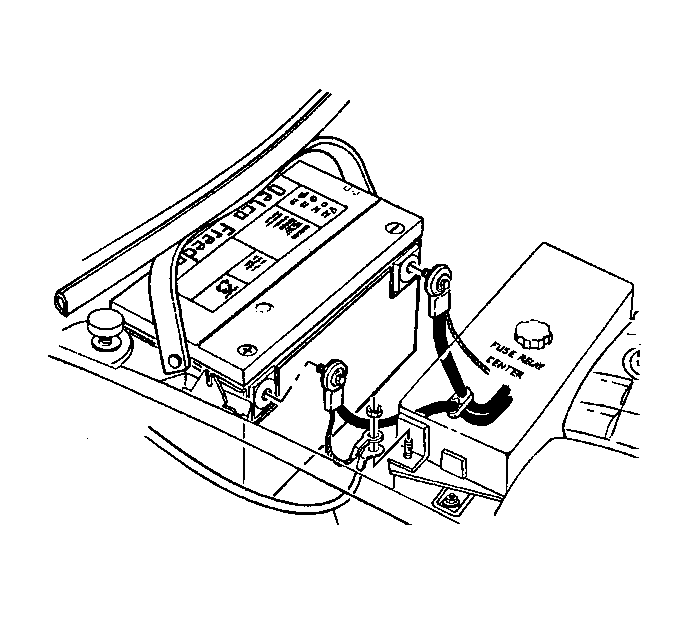
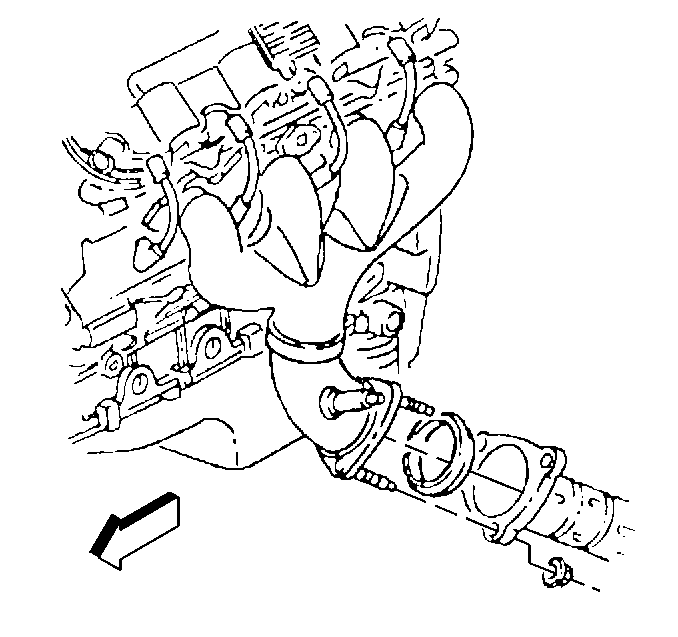
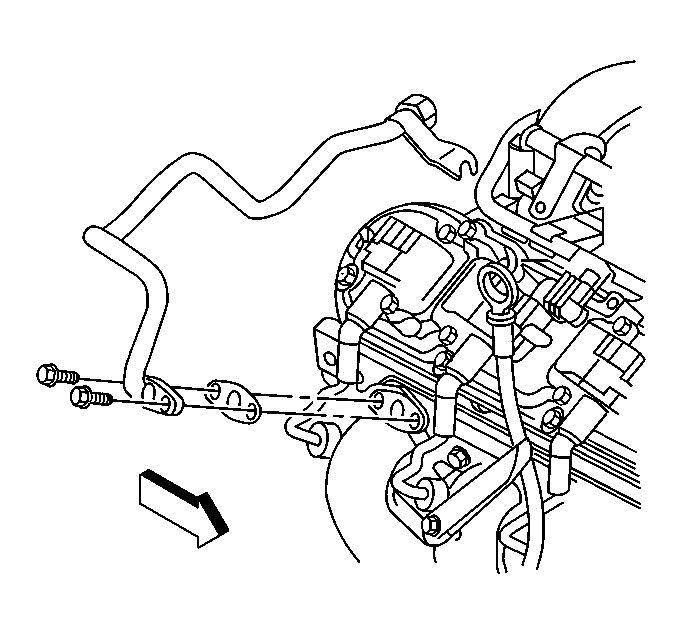
| • | The bolts |
| • | The pipe |
| • | The gasket |
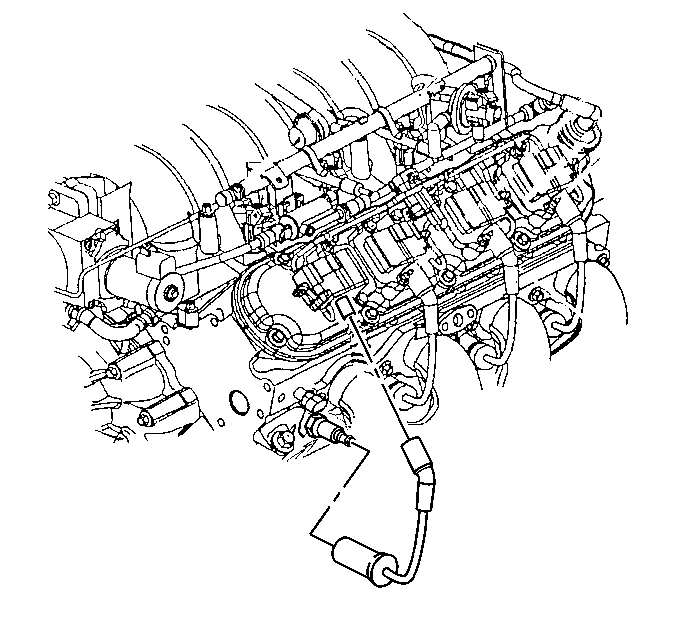
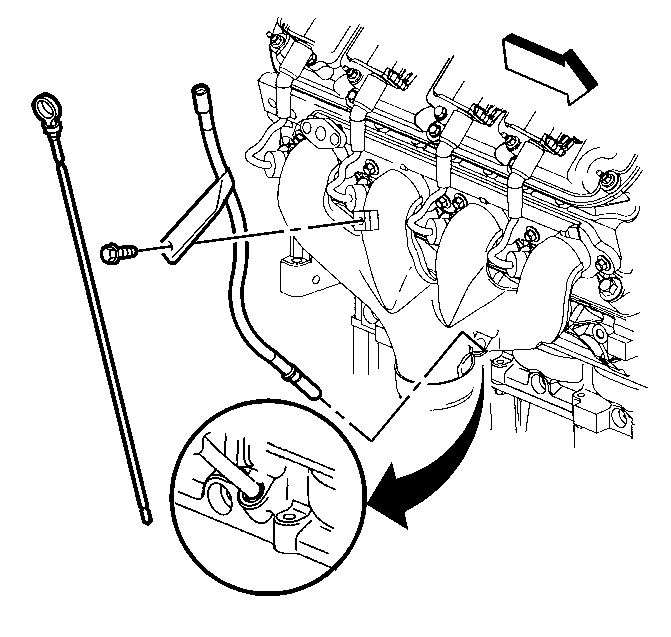
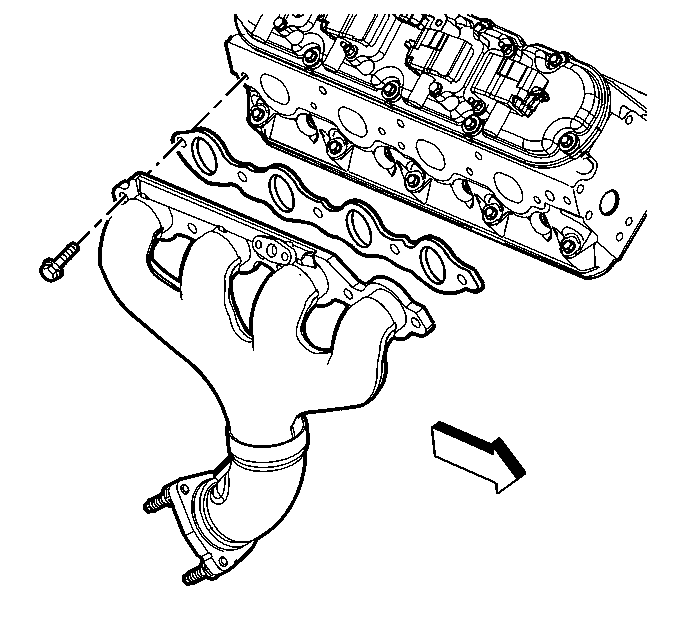
Installation Procedure
- Install the exhaust manifold. Refer to Exhaust Manifold Installation .
- If the O-ring seal is damaged, install a new O-ring on to the oil level indicator tube.
- Install the tube to the engine.
- Rotate the tube into the proper position.
- Install the oil level indicator tube bolt.
- Install the oil level indicator to the tube.
- Install the spark plug wires to the spark plugs.
- Install the following secondary air injection pipe components:
- Raise the vehicle and support.
- Install the HO2S. Refer to Heated Oxygen Sensor Replacement in Engine Controls.
- Install the RH intermediate pipe flange to the exhaust manifold studs.
- Install the intermediate pipe flange nuts.
- Lower the vehicle.
- Connect the negative battery cable.

Tighten
Tighten the oil level indicator bolt to 16 N·m (12 lb ft).


| • | The gasket |
| • | The pipe |
| • | The bolts |
Tighten
Tighten the AIR pipe bolts to 25 N·m (18 lb ft).

Tighten
Tighten the intermediate pipe flange nuts to 20 N·m (15 lb ft).
Tighten
Tighten the negative battery bolt to 15 N·m (11 lb ft).
Exhaust Manifold Replacement Left
Removal Procedure
Tools Required
J 34730-1A Fuel Pressure Gage
- Disconnect the negative battery cable.
- Raise the vehicle and support. Refer to Lifting and Jacking the Vehicle .
- Remove the left hand intermediate pipe flange nuts from the exhaust manifold studs.
- Remove the heat oxygen sensor (HO2S). Refer to Heated Oxygen Sensor Replacement .
- Lower the vehicle.
- Remove the engine beauty cover.
- Disconnect the generator and coolant temperature sensor electrical connectors.
- Remove the accessory drive belt (5) from the generator pulley (6).
- Remove the generator mounting bolts.
- Remove the generator.
- Remove the air injection reaction (AIR) hose from the AIR pipe check valve.
- Remove the AIR pipe, bolts, and gasket from the exhaust manifold and reposition.
- Remove the spark plug wires from the coils and the spark plugs.
- Remove the spark plugs from the cylinder head. Refer to Spark Plug Replacement in Engine Electrical.
- Remove the exhaust manifold. Refer to Exhaust Manifold Removal
- Discard the gasket and bolts.

Caution: Unless directed otherwise, the ignition and start switch must be in the OFF or LOCK position, and all electrical loads must be OFF before servicing any electrical component. Disconnect the negative battery cable to prevent an electrical spark should a tool or equipment come in contact with an exposed electrical terminal. Failure to follow these precautions may result in personal injury and/or damage to the vehicle or its components.

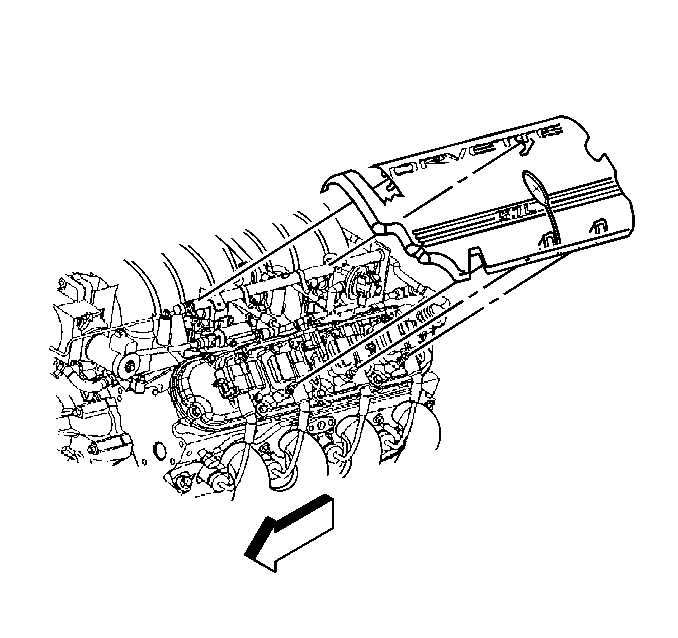

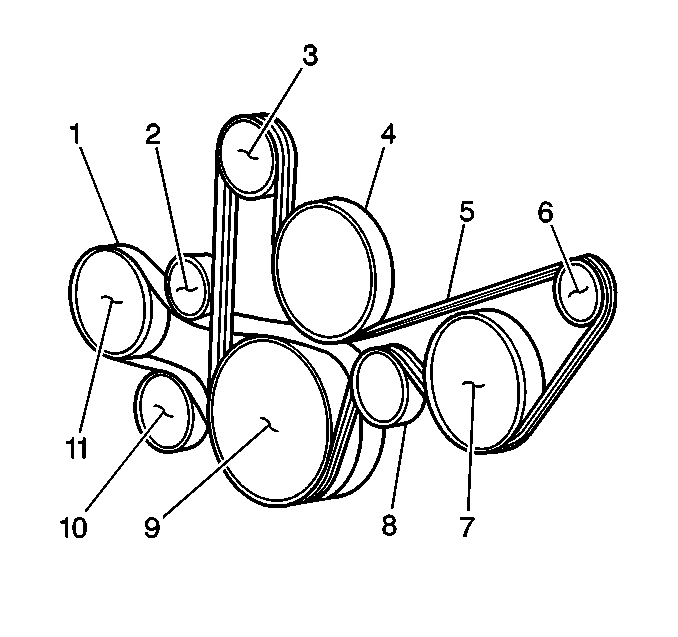

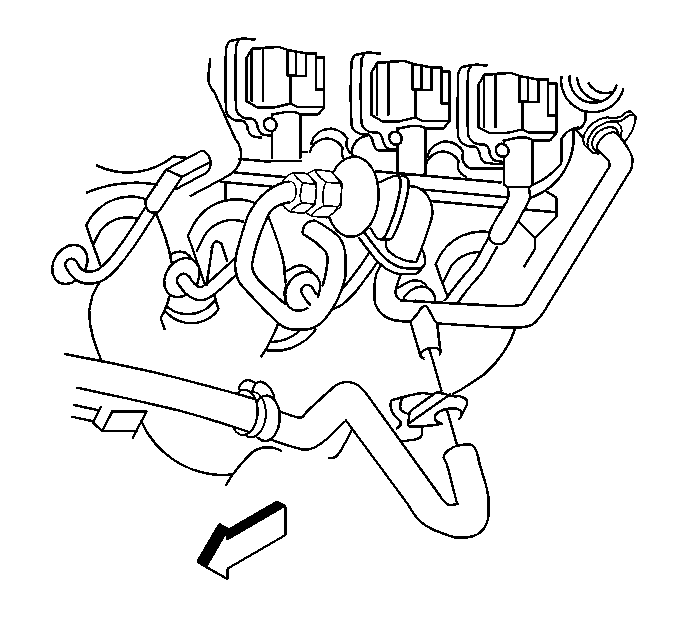
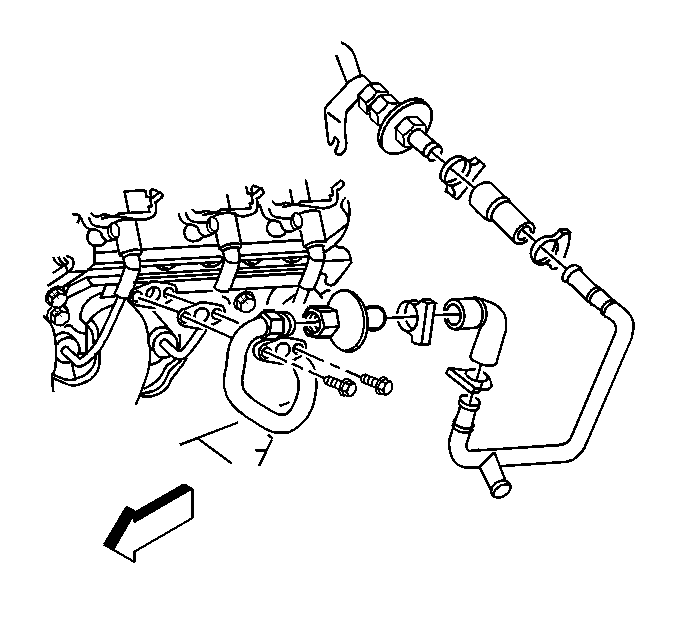

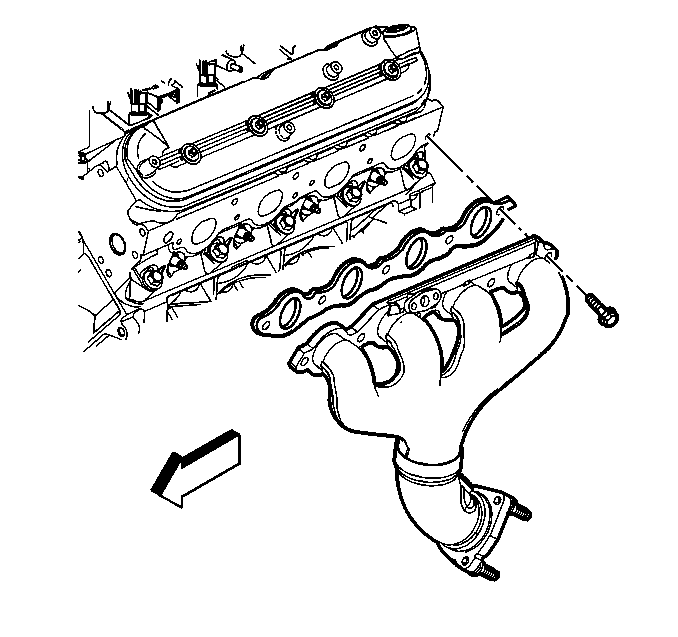
Installation Procedure
- Install the exhaust manifold. Refer to Exhaust Manifold Installation .
- Install the spark plugs to the cylinder head. Refer to Spark Plug Replacement in Engine Electrical.
- Install the spark plug wires to the spark plugs and the coils.
- Install the AIR pipe, bolts, and gasket to the exhaust manifold.
- Install the AIR hoses to the AIR pipe check valve.
- Install the generator.
- Install the generator mounting bolts.
- Install the accessory drive belt (5) to the generator pulley (6).
- Connect the generator and coolant temperature sensor electrical connectors.
- Install the engine beauty cover to the engine.
- Raise the vehicle and support.
- Install the HO2S sensor. Refer to Heated Oxygen Sensor Replacement .
- Install the intermediate pipe flange-to-the exhaust manifold studs.
- Install the intermediate pipe flange nuts.
- Lower the vehicle.
- Connect the negative battery cable.
- Program the Transmitters. Refer to Transmitter Programming/Synchronization in Keyless Entry.


Notice: Use the correct fastener in the correct location. Replacement fasteners must be the correct part number for that application. Fasteners requiring replacement or fasteners requiring the use of thread locking compound or sealant are identified in the service procedure. Do not use paints, lubricants, or corrosion inhibitors on fasteners or fastener joint surfaces unless specified. These coatings affect fastener torque and joint clamping force and may damage the fastener. Use the correct tightening sequence and specifications when installing fasteners in order to avoid damage to parts and systems.
Tighten
Tighten the AIR pipe bolts to 25 N·m (18 lb ft).


Tighten
Tighten the generator mounting bolts to 50 N·m (37 lb ft).




Tighten
Tighten the intermediate pipe flange nuts to 20 N·m (15 lb ft).
Tighten
Tighten the negative battery bolt to 15 N·m (11 lb ft).
